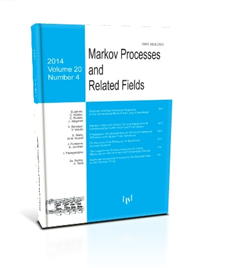Fast and Slow, Adiabatic and Geometric Effects in Nonequilibrium Dynamics
C. Maes
2013, v.19, Issue 3, 453-457
ABSTRACT
Understanding in the natural sciences often amounts to being able to think together a variety of phenomena in terms of more elementary laws. At the same time, phenomena appear on certain scales of description, and even though certain sets of phenomena and descriptions appear autonomous we hope to be able to move between different scales and to derive one level of description from another one. Statistical mechanics is a standard example of such a transfer science; thermodynamic and hydrodynamic behavior is derived and corrected by including fluctuations on the level of the more microscopic dynamics. That is at least working well for equilibrium statistical mechanics or when local equilibrium is established. Big successes include then the understanding of phase transitions and critical phenomena within a common framework of Gibbs ensembles. The renormalization group idea makes it also clear that many details of the microscopic model do not matter so much. The construction of nonequilibrium statistical mechanics requires important dynamical considerations and purely thermodynamic factors as received in terms of entropy and free energy functionals probably do not suffice. Within these dynamical features, various scales of description again emerge, involving static or quasi-static to very fast degrees of freedom. A great deal of approximation techniques are in fact based on separation of time scales, such as in adiabatic theorems, Born - Oppenheimer approximation etc. The workshop revisited various aspects of these ideas, and in particular within the context of nonequilibrium statistical mechanics.
Keywords: nonequilibrium dynamics,phase transitions,critical phenomena
COMMENTS
Please log in or register to leave a comment

